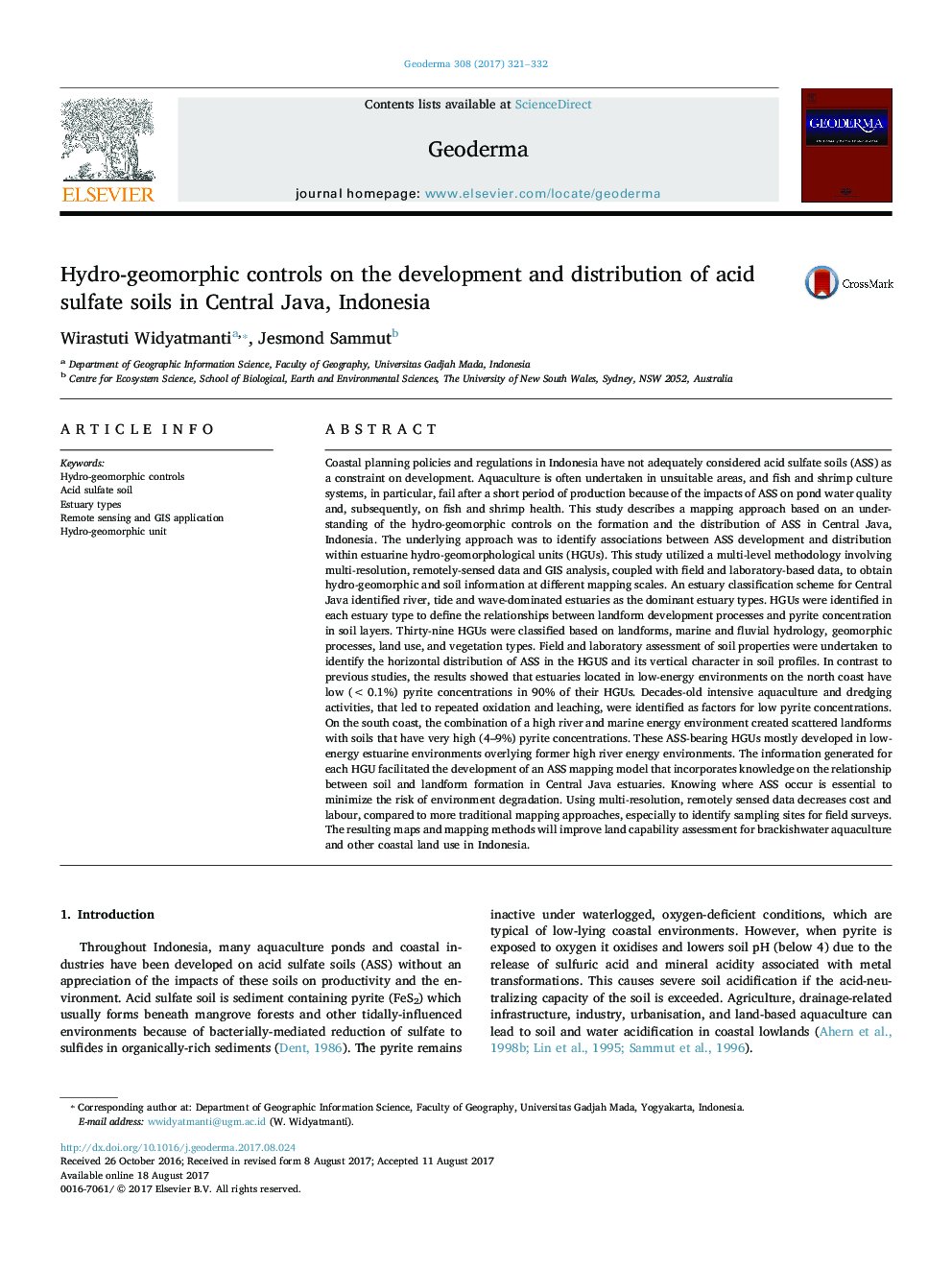| کد مقاله | کد نشریه | سال انتشار | مقاله انگلیسی | نسخه تمام متن |
|---|---|---|---|---|
| 5770574 | 1629409 | 2017 | 12 صفحه PDF | دانلود رایگان |
- A multilevel hydrogeomorphic mapping method to map the ASS occurrences is proposed.
- A remote sensing based classification scheme for estuaries is provided.
- There is association among ASS formation and distribution in hydrogeomorphic units.
- The hydro-geomorphic maps improve the land capability assessment for aquaculture.
Coastal planning policies and regulations in Indonesia have not adequately considered acid sulfate soils (ASS) as a constraint on development. Aquaculture is often undertaken in unsuitable areas, and fish and shrimp culture systems, in particular, fail after a short period of production because of the impacts of ASS on pond water quality and, subsequently, on fish and shrimp health. This study describes a mapping approach based on an understanding of the hydro-geomorphic controls on the formation and the distribution of ASS in Central Java, Indonesia. The underlying approach was to identify associations between ASS development and distribution within estuarine hydro-geomorphological units (HGUs). This study utilized a multi-level methodology involving multi-resolution, remotely-sensed data and GIS analysis, coupled with field and laboratory-based data, to obtain hydro-geomorphic and soil information at different mapping scales. An estuary classification scheme for Central Java identified river, tide and wave-dominated estuaries as the dominant estuary types. HGUs were identified in each estuary type to define the relationships between landform development processes and pyrite concentration in soil layers. Thirty-nine HGUs were classified based on landforms, marine and fluvial hydrology, geomorphic processes, land use, and vegetation types. Field and laboratory assessment of soil properties were undertaken to identify the horizontal distribution of ASS in the HGUS and its vertical character in soil profiles. In contrast to previous studies, the results showed that estuaries located in low-energy environments on the north coast have low (<Â 0.1%) pyrite concentrations in 90% of their HGUs. Decades-old intensive aquaculture and dredging activities, that led to repeated oxidation and leaching, were identified as factors for low pyrite concentrations. On the south coast, the combination of a high river and marine energy environment created scattered landforms with soils that have very high (4-9%) pyrite concentrations. These ASS-bearing HGUs mostly developed in low- energy estuarine environments overlying former high river energy environments. The information generated for each HGU facilitated the development of an ASS mapping model that incorporates knowledge on the relationship between soil and landform formation in Central Java estuaries. Knowing where ASS occur is essential to minimize the risk of environment degradation. Using multi-resolution, remotely sensed data decreases cost and labour, compared to more traditional mapping approaches, especially to identify sampling sites for field surveys. The resulting maps and mapping methods will improve land capability assessment for brackishwater aquaculture and other coastal land use in Indonesia.
Journal: Geoderma - Volume 308, 15 December 2017, Pages 321-332
